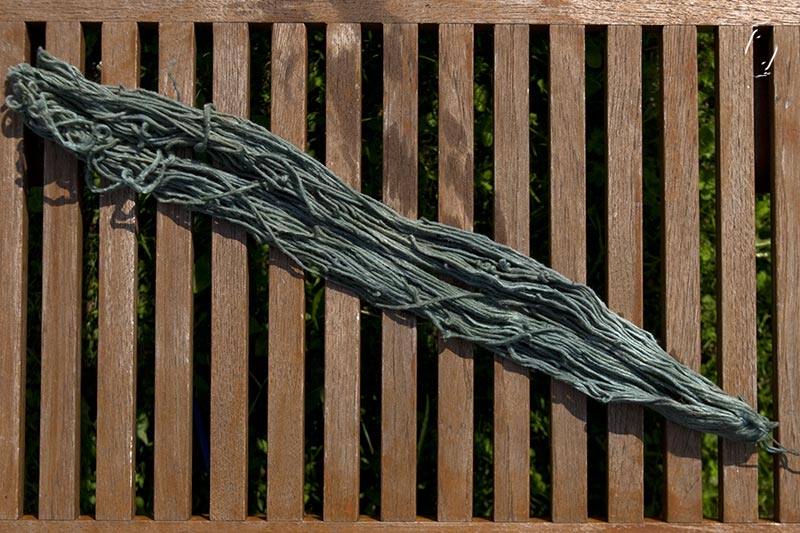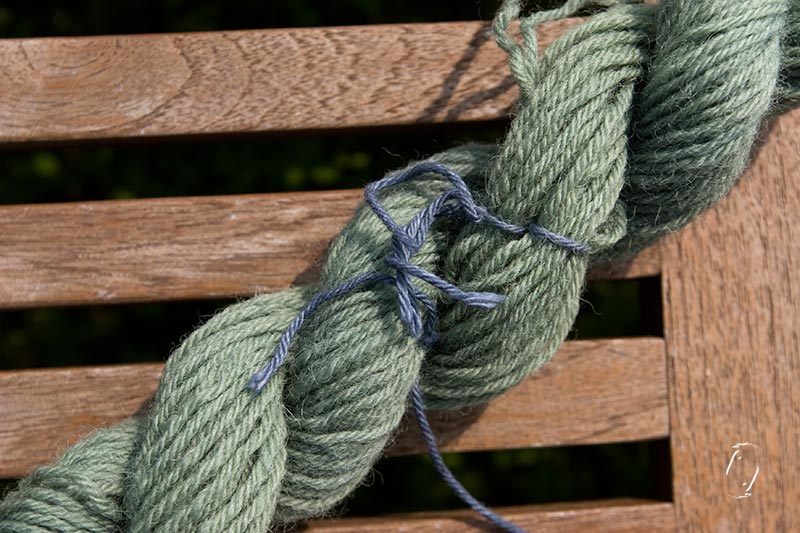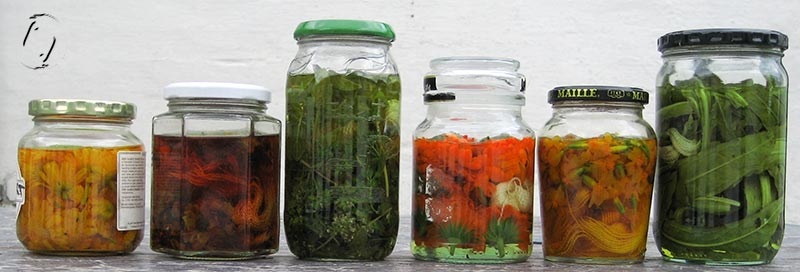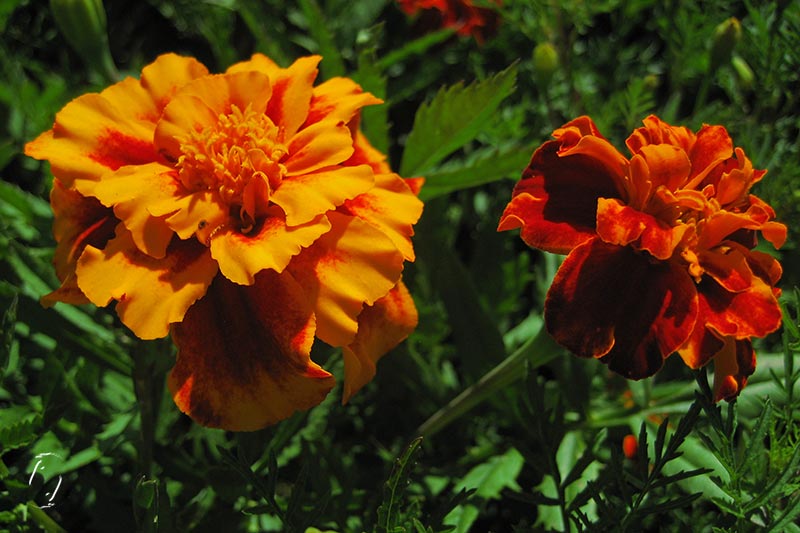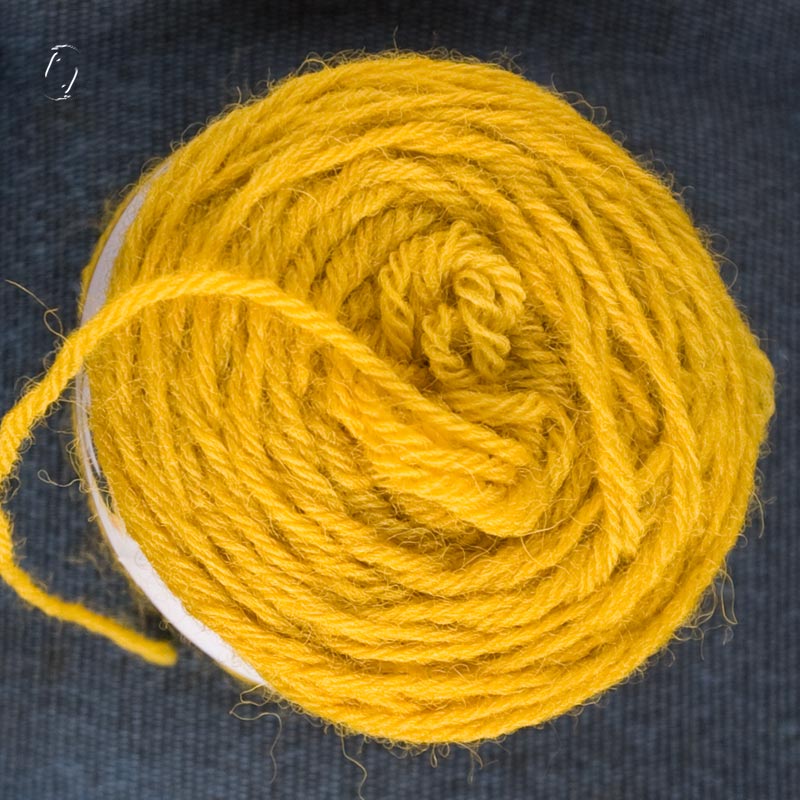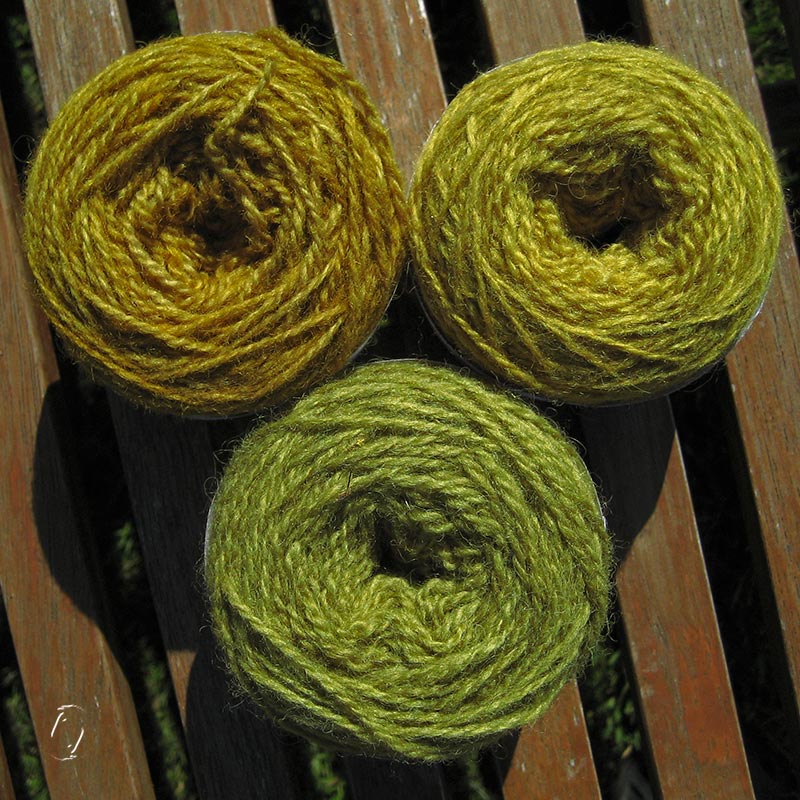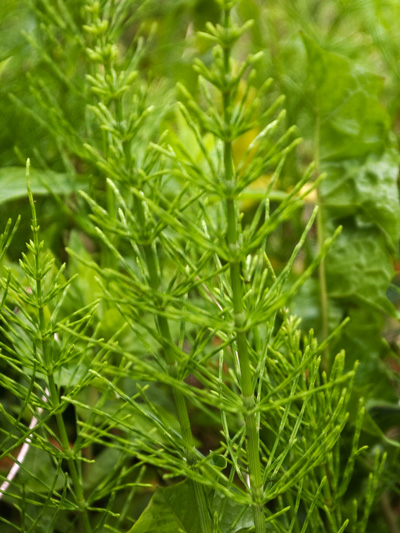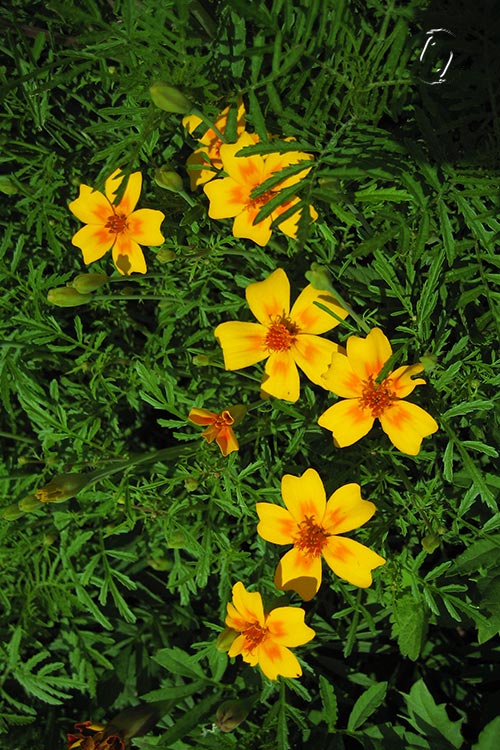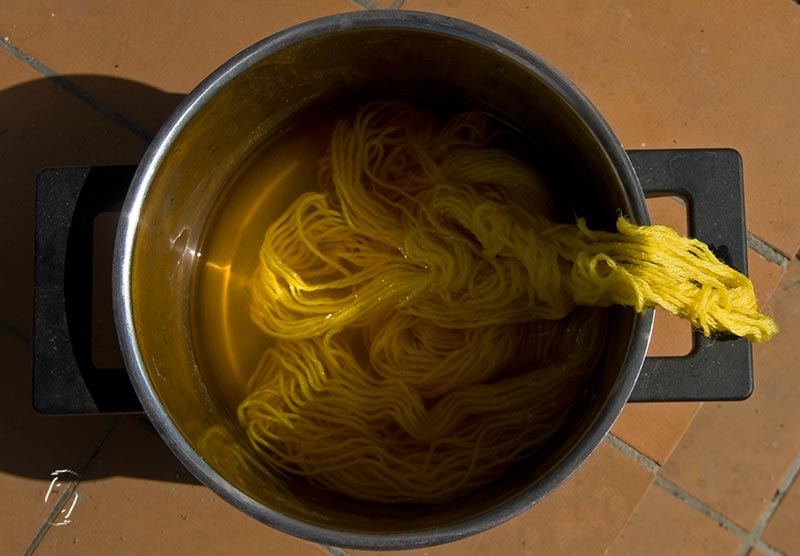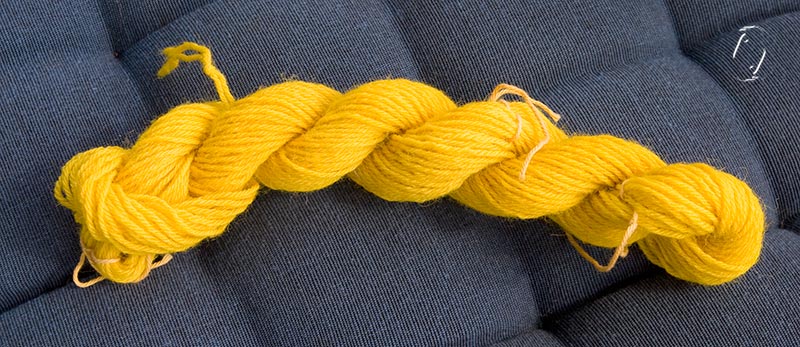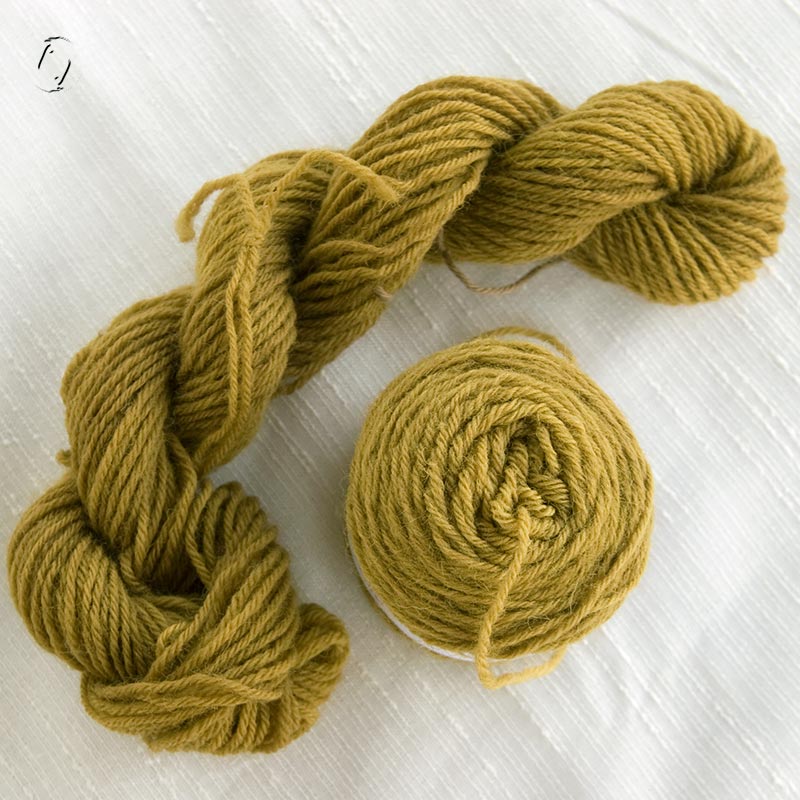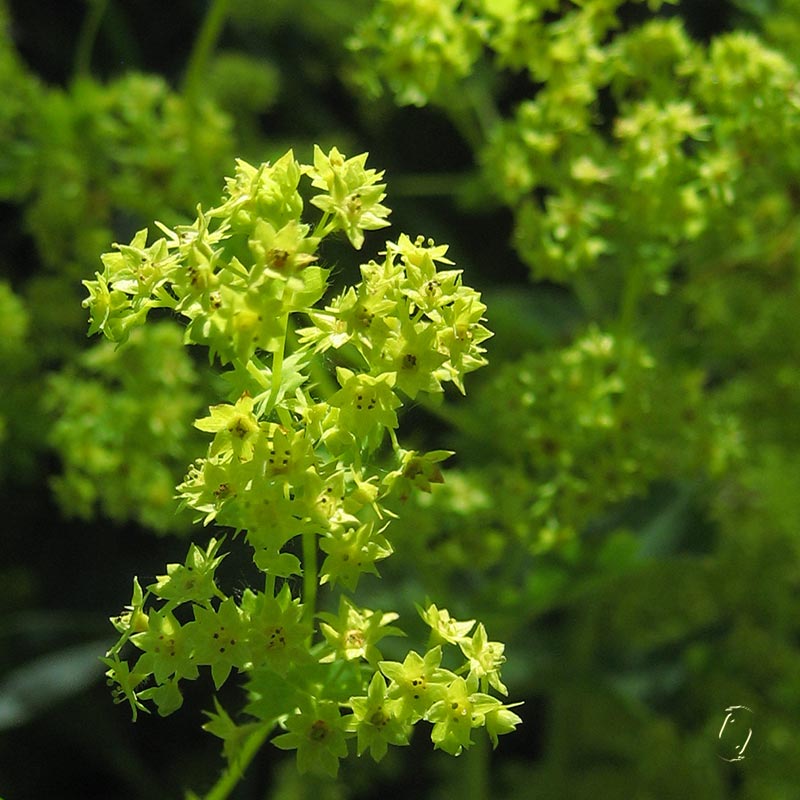“Red” sage 3:1 in rainwater. Left it rather long in the dyebath because nothing much seemed to be happening, came out a nice fresh green eventually, which has now been sent to solar testing.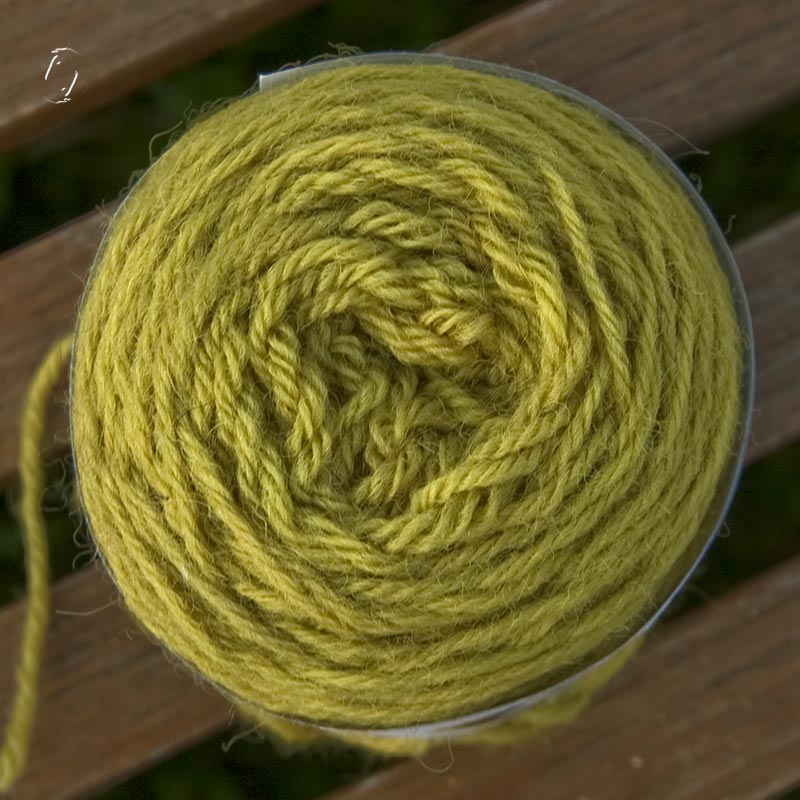
Purple basil 2:1, hard water. Plants boiled, yarn then solar dyed for 2 days. Dyebath blue, no pH alteration on my part. Rita Buchanan says it’s the same colour molecule as in Hollyhock, so it should be able to give blue and purple at other pH, I suspect red cabbage and black currant are in the same group, as they respond with the same colour scale. Hard to get onto the yarn and very fugitive. Also sent to solar testing in the bedroom window – I don’t have high hopes, but I’m wishing, because it’s such a nice green!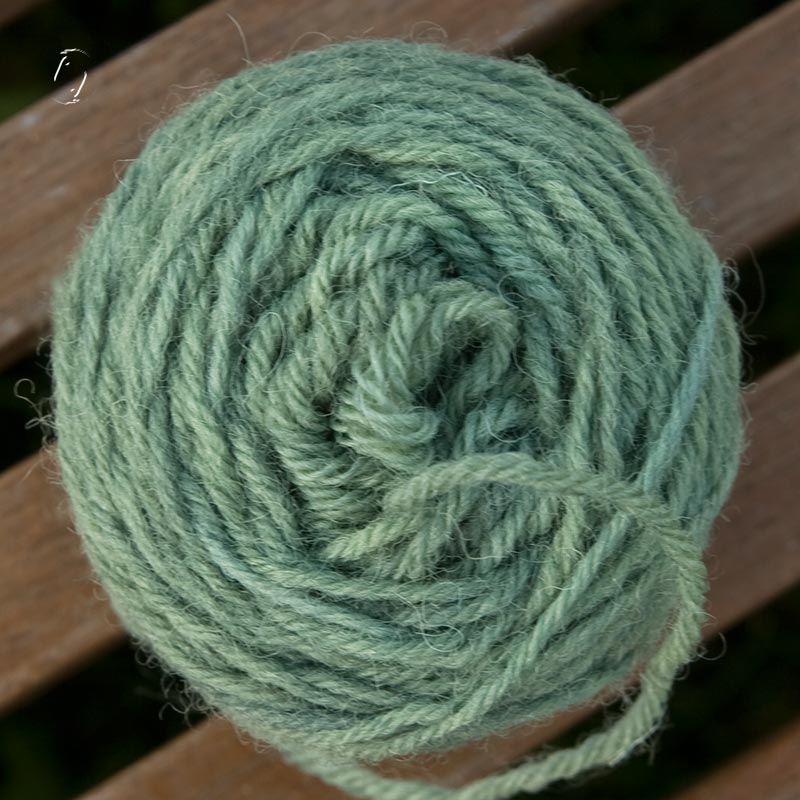
When the purple basil grows back I’ll test it with tin mordant, I got a good purple with black currants.
It’s interesting that the unmordanted cotton ties turned blue, so I popped a failed cotton skein with 4 other layers on it into the exhaust. It would be interesting to test on silk as well.
I’ve also prepared some jars for solar dyeing:
Dyer’s chamomile, coreopsis, oregano, marigold, tagetes, weld leaves.
Urtefarvning
Ikke at jeg tror farverne er særligt lysægte, men det skulle lige prøves, farvning med rød basilikum og salvie. (jeg har også sået bronzefennikel, men de skal lige blive lidt større)
Salviegarnet skulle ligge ret lang tid før det tog farve, det samme gælder basilikum, som jeg valgte at solfarve i drivhuset et par dage. Farvebadet og bomuldssnorene blev blå, men uldgarnet blev grønt. Det skulle være samme farvemolekyle som stokroser, så det er nok ret pH følsomt, hvis man vil skrue lidt på farven.
Jeg har også gang i et par glas i drivhuset, hvor de bare står og gasser i solen. Fra venstre Farvegåseurt, Skønhedsøje, oregano, morgenfrue, tagetes og vau.
